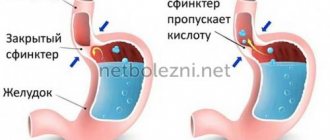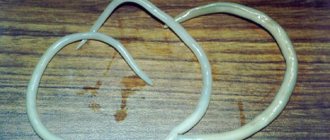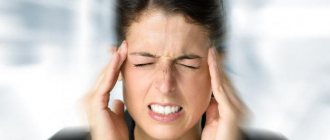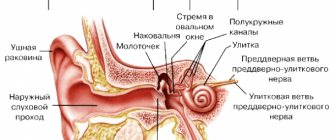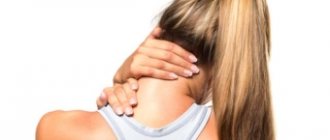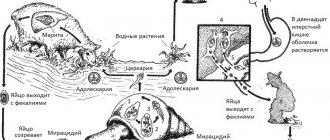Viral meningitis is an infectious non-contagious inflammation of the meninges. Most often, the isolation of a virus from the cerebrospinal fluid of a sick person indicates a secondary disease - the pathogen penetrates the blood-brain barrier in the absence of adequate treatment for diseases caused by enteroviruses, arenoviruses and herpesviruses. Viral meningitis is often complicated by mumps, better known as mumps, polio, measles, and herpes simplex.
Viral meningitis has a pronounced seasonality, closely related to enterovirus infection and mumps - most often outbreaks of the disease are observed in the summer.
Etiology and pathogenesis
Viral meningitis is an infectious disease caused by the penetration of pathogenic agents into the membranes of the brain. Viruses enter the soft shell in one of three ways:
- hematogenously - through blood vessels;
- lymphogenous - through the lymph flow;
- perineural route - entry of a viral microorganism from the nasopharynx cavity along the branches of the olfactory nerve.
How is the virus transmitted? Infection occurs through airborne droplets or contact (sexual, household contact) methods. The leading determining factor is the permeability of the blood-brain barrier, which allows viral agents to easily penetrate brain structures.
Predisposing factors are:
- closed or open craniocerebral injuries;
- insolation – excessive exposure to sunlight;
- overwork;
- dieting, poor nutrition, fasting;
- previous viral diseases that reduce general and local reactivity.
The main culprits of viral forms of meningitis are human enteroviruses . These microorganisms are resistant to acidic environments, ethanol, and traditional disinfectants and detergents. Enteroviruses remain viable outside the host for several days under standard climatic conditions. Most often, enterovirus infection is caused by ECHO viruses (enteric cytopathogenic humanorphan viruses) or Coxsackie viruses. These members of the enterovirus family are highly invasive, which causes their rapid spread. The habitat of Coxsackie viruses is the human digestive tract. They spread from an infected subject to a healthy person through insufficiently treated hands and through contact with contaminated surfaces.
Viral types of meningitis can be initiated by other pathogens, including:
- paramyxoviruses (Paramyxoviridae);
- Epstein-Barr virus (Human gammaherpesvirus 4);
- arenaviruses (Arenaviridae);
- cytomegalovirus (Human betaherpesvirus 5);
- adenoviruses (Adenoviridae);
- togaviruses (Togaviridae);
- bunyaviruses (Bunyavirales).
The incidence of serous viral meningitis increases significantly in the summer.
How is viral meningitis transmitted? signs, treatment
Meningitis is a serious infectious disease, dangerous and difficult to cure! What is important to know to avoid infection is how viral meningitis is transmitted, the signs and symptoms of the disease. How to determine the presence of a virus in our body?
Features of the development of meningitis
Meningitis - what kind of disease? This is an inflammation of the pia mater, the connective tissue of the brain and spinal cord. Viral meningitis is a common form of the disease, provoked by the entry of a causative virus into the body.
There is no point in treating this ailment negligently. Yes, the viral form of meningitis is well studied and can be cured with timely consultation with specialists, but it still has serious consequences and complications.
What can trigger the appearance of this disease?
What causes meningitis? You can get this disease at any age, but most often it is children, teenagers and the elderly. The following infections pose a danger to children:
- chickenpox;
- mumps (mumps);
- measles;
- rubella;
- ARVI in chronic form.
The most susceptible to the disease are premature babies, patients with a weakened immune system, people with head and back injuries, those with nervous system disorders, etc.
How is the disease transmitted?
Even if a person has contracted an infection that provokes this disease, there is no need to talk about the development of the disease. It all depends on the condition of the patient’s body, his immune system, and the presence of other chronic disorders in acute form.
In this field the disease develops. How is viral meningitis transmitted?
- Airborne transmission is a common form; coughing or sneezing can cause illness. This also includes kissing and sexual intercourse with a carrier of the infection.
- Oral-fecal transmission is common in children, when young patients do not always wash their hands after using the toilet or after contact with animals. Only careful hygiene can protect a child from the manifestation of the disease.
How else is viral meningitis transmitted? These can be various methods of infection through food, water, contaminated by rodents. The disease can be provoked by insect bites that are carriers of the disease. Here are the main viruses that cause the disease:
- Coxsackie;
- ECHO (Escherichia coli);
- parotitis;
- lymphocytic choriomeningitis;
- herpes.
When infected, the pathogen enters the blood, and through the blood vessels reaches the central nervous system, after which the virus attacks the lining of the brain and contributes to the development of inflammation of the connective tissue.
This is what causes meningitis in the human body. It is important to correctly recognize the disease in order to promptly seek qualified help and begin comprehensive treatment of the patient.
Clinical picture of viral meningitis
Symptoms of the disease in children and adults may appear only after a certain period of time after infection. The incubation period is 2-5 days; in children, the disease develops faster, the symptoms are acute and visible to the naked eye.
The first signs of the disease can be mistaken for a common infectious infection, however, only a specialist can accurately diagnose the patient’s condition. The main symptoms of viral meningitis:
- high temperature, which is difficult to stabilize with antipyretics;
- chills and muscle cramping;
- decreased blood pressure;
- severe aching or throbbing headache, dizziness and loss of consciousness may occur;
- severe intestinal upset;
- clouding of mind, apathy;
- lack of appetite, inability to eat food due to frequent pulsating vomiting.
Also, with meningitis, such features of the malaise may be observed as difficulty bending the head, pain when tapping on the skull, deterioration of hearing and vision, changes in consciousness, excessive excitability or drowsiness, and coma.
Signs of meningitis in women can worsen during the menstrual or menopausal periods, when the body is weakened, while a viral infection can cause septic shock, swelling of the brain, and the development of meningoencephalitis.
Attention: self-medication is strictly contraindicated. Further actions without urgent help from a neurologist and infectious disease specialist can cause irreversible consequences.
What is the danger of the disease?
Even after successful treatment and complete recovery, you need to be registered with a neurologist for some time. For three months, children are prohibited from engaging in physical exercise or being exposed to direct sunlight for a long time.
The consequences of meningitis suffered in childhood can be dangerous for the health and subsequent development of the child. This is a mental disorder, increased anxiety, decreased immunity, frequent relapses against the background of viral diseases.
There may be a decrease in visual acuity, hearing, mental retardation, blindness, and loss of ability to work. In 2% of cases there are deaths (in the absence of correct and timely treatment of the patient).
Treatment of viral meningitis
Improvement of the body should only be carried out in a hospital under the supervision of the attending doctor; any attempts to self-medicate will only aggravate the patient’s situation.
The main goal of treatment is to eradicate the cause of the illness; the course is based on the use of antiviral and antibacterial drugs. Direct injection of medications into the spinal canal may be prescribed.
Procedures to remove fluid from the body to relieve brain swelling are also recommended. Various medications are used to alleviate the clinical picture of the disease.
Conclusion and recommendations!
Now you know how viral meningitis is transmitted, its symptoms and possible complications. Thanks to the information received, you can avoid infection, and if infected, consult a doctor in a timely manner so as not to trigger the development of meningitis.
In order to prevent the disease, it is necessary to carefully observe personal hygiene, strengthen the immune system, avoid contact with carriers of infection, and treat respiratory diseases in a timely manner so as not to cause complications and not to transfer a mild illness to a chronic stage.
Take care of yourself and your children, be sure to get vaccinated against diseases that can cause the development of viral meningitis!
Source: //your-lor.ru/kak-peredaetsya-virusnyj-meningit-priznaki-lechenie/
Clinical picture
The incubation period in most cases lasts from two to five days. The disease is characterized by the rapid development of clinical symptoms. Typical signs of viral meningitis are high body temperature and intoxication syndrome. Patients complain of general malaise, muscle pain, loss of appetite, nausea and repeated episodes of vomiting. Some patients report epigastric pain and diarrhea.
For viral meningitis, minor forms of depression of consciousness are likely. Soporous and comatose states are not present in the clinical picture of the disease.
After a maximum of two days, meningeal syndrome becomes pronounced, manifested by severe painful persistent cephalalgia, repeated reflex eruption of stomach contents. Some patients feel weakness, lethargy, and drowsiness. Other patients are in an agitated, restless state. Some people experience nasal discharge, a cough, and a sore throat. Typical signs of an infectious disease are excessive sensitivity to light and sound stimuli. Excessive sensitivity of the skin may also occur.
Examination of patients reveals positive Kernig and Brudzinski symptoms, and stiffness of the cervical muscles. Hypertensive syndrome associated with increased intracranial pressure is determined.
Body temperature most often returns to normal after five days. Most pediatric and adult patients make a full recovery. Some people who have had viral meningitis continue to have a mild headache, minor cognitive impairment, and asthenic status.
Depending on age, symptoms manifest differently in children:
- in newborns, bulging of the fontanel, high temperature, inflammatory damage to the heart muscle, and neurological disorders are recorded;
- in babies under 6 months, the leading symptom is debilitating diarrhea;
- in children under three years of age, typical manifestations are convulsive phenomena;
- in preschoolers over three years of age, the main symptoms are severe cephalalgia, high fever, chills, vomiting, and skin rash.
The prognosis of the disease in children under 3 years of age is not clear. In newborns and babies under one year of age, serious complications are likely to occur. Typical consequences of viral meningitis in children: deterioration of cognitive abilities, difficulties in mastering educational material, persistent hearing loss.
How is viral meningitis transmitted, how can you get infected from a person?
Depending on the factors that caused the disease, meningitis is divided into:
- Primary purulent meningitis. They are an independent disease caused by a bacterial infection (for example, meningococcal meningitis).
- Secondary purulent meningitis. They develop as a complication of other diseases, most often with infections of the ENT organs: otitis media, sinusitis, etc.
Depending on the severity of the manifestation of clinical symptoms, mild, moderate, severe and extremely severe forms of the disease are distinguished.
It can be primary and secondary.
Purulent meningitis is a life-threatening inflammation of the membranes of the brain and spinal cord, of a bacterial nature. Most often, purulent meningitis is caused by meningococcal infection (20% of cases), pneumococci (up to 13%) and Haemophilus influenzae (up to 50%). The remaining cases are due to streptococcal and staphylococcal infections, salmonella, infection with Pseudomonas aeruginosa, and Friedlander's bacillus.
Meningitis is a disease in which the lining of the brain becomes inflamed as a result of infection of the cerebrospinal fluid. The disease can be caused by the following reasons: bacteria, viruses, cancer, injuries, medications.
Causes of the disease
The most dangerous infectious diseases lie in wait for those people who do not take care of their health. Most patients with inflammation of the membranes of the brain and spinal cord not only did not know how meningitis was transmitted, but were also sure that this disease was the result of hypothermia, and not infection.
To avoid a serious pathological process, it is necessary to understand how the transmission and development of the disease occurs, as well as adhere to the rules for its prevention.
The disease develops in the tissues of the meninges. If left untreated, it affects the brain. The consequences of meningitis are septic shock, deafness, epilepsy, paresis, paralysis, hydrocephalus, ischemic stroke, which develops in 25% of cases in adult patients. It is worth noting the disturbance of mental activity and mental retardation in children.
In 10% of cases, the disease of bacterial etiology leads to death. Every 5th sick child under 5 years of age dies. Due to the severe consequences, many people are interested in the topic of how they become infected with meningitis. To find out what it is, how children and adults get sick, you need to get an idea of the mechanism of development of the pathology. There are serous and purulent. Characteristic symptoms:
- Headache, sometimes excruciating, unbearable.
- Increased body temperature above 38.5°C.
- Nausea, vomiting.
- Blurred consciousness.
- Stiffness of the muscles located in the neck area.
- Photophobia, noise sensitivity.
- Damage to the central nervous system, which is expressed in impaired visual function (loss of visual fields, decreased visual acuity), anisocoria (different pupil sizes), neuritis of the facial and trigeminal nerve.
In cases of severe damage to the meninges, convulsions and psychomotor agitation are observed, alternating with periods of lethargy. Hallucinations and delusions may occur. In children, the fontanelle enlarges, and there are often nonspecific symptoms: drowsiness, nervousness. Depending on the type of pathogen, the symptoms are supplemented by specific signs.
With tuberculous meningitis, general weakness, difficulty urinating, hyperkinia of the skin appears; with serous viral meningitis, there is an upset of the digestive system and catarrh of the respiratory system; with bacterial meningitis, Brudzinsky's symptoms, Kernig's symptoms, and hemorrhagic exanthema appear. Meningitis is contagious if the pathology is caused by viruses, fungi, or bacteria. If meningitis is suspected, an examination is prescribed.
A general and biochemical blood test is taken to confirm the presence of pathogens and pathological changes. Bacteriological culture of samples from the nasopharynx is carried out if meningococcal and pneumococcal infections are suspected. The final diagnosis is made based on the results of a lumbar puncture test. Traces of the inflammatory process are always present in the cerebrospinal fluid.
In other cases, the pathological process that so often manifests itself in children is a consequence of a weak immune system and insufficient hygiene. These causes of meningitis concern adults. You can understand what meningitis is and how it is dangerous for human life by looking at the statistics.
If you do not undergo timely diagnosis and treatment, the mortality rate from it can reach 50%. If detected in a timely manner, this disease can be successfully treated and the number of deaths drops to 5-10%. However, not only the patient’s life depends on how quickly the diagnosis was made , but also possible complications, for example, blindness, deafness, epilepsy, etc.
d. They can remain for 1-2 years or for life. Meningitis of the spinal cord (spinal), as well as the brain (cerebral), can affect anyone. There are types of disease that are not transmitted by a pathogen from the external environment, for example, with advanced sinusitis.
Acute meningitis is the most dangerous form of this disease.
The mortality rate as a percentage of the total number of cases is not decreasing, despite the successes of pharmacy.
This statistic is especially high in young children. Is meningitis contagious? There is no doubt about it.
It is caused by pathogens that are the most aggressive to the central nervous system. Such pathogens are everywhere and they are easily transmitted between people, most often by airborne droplets.
Healthy people can also be carriers of this infection. During outbreaks of meningitis, which occur every year, the likelihood of becoming infected is high. The mother of a child with meningitis can become infected through a soiled diaper. Not all people who are infected with enterovirus meningitis become seriously ill.
Most infected people feel unwell, as if they had an acute respiratory infection. The incubation period of this disease is a week, after which the body temperature rises sharply.
The bacterial variety of meningitis can be caused by Haemophilus influenzae type B, pneumococci, or meningococci.
Myth: You can only get meningitis in winter, when it is very cold outside.
- Meningitis is an infectious disease, so in principle it can be contracted in any season of the year, and if you pay attention to the statistics of epidemics in Russia, in recent years outbreaks have most often been observed in summer and autumn.
- In winter, during frosts, most viruses and bacteria are inactive, as they are afraid of the cold, but in the summer and autumn months they are quite strong.
- You can also get meningitis in the summer if you swim in polluted water bodies or poorly cleaned pools.
- The risk of infection occurs when the immune system is weakened and when communicating with sick patients.
Labor Code of the Russian Federation reduction of part-time employee
Myth: Meningitis can be easily treated at any time. Unfortunately, doctors have not learned how to prevent
As a result of the disease, lasting immunity remains. So, is meningitis contagious and how does infection spread? Let's look further.
The infectious agent enters the body through the mucous membrane of the nose, pharynx, bronchi, and the primary inflammatory response is localized there. The time from the pathogen entering the bloodstream to the development of the first symptoms is on average 1 week. The earliest sign is often a headache, especially in the forehead and crown.
Patients complain of nasal congestion and discharge, sore throat, increased pain when swallowing. Then a dry, unproductive cough develops against a background of general poor health. A large number of patients experience a rise in temperature to 37-38 degrees, which lasts 2-3 days, in rare cases up to a week.
Sample provision of one-time financial assistance to citizens
Previously, patients who fell ill with this type of meningitis died in most cases, but now medicine already has the ability to provide adequate therapy.
Patients complain of weakness, lethargy, decreased performance, loss of appetite.
Symptoms also include unbearable headache and repeated vomiting.
At more severe stages, disturbances in brain activity and paresis are noted. If the patient is not provided with qualified assistance within 30 days, he dies.
Purulent - severe, this form of the disease is life-threatening.
Its causative agent is pathogenic microorganisms, and the symptoms at the initial stage are similar to a common viral infection, which makes diagnosis difficult, and the patient loses valuable time taking cold pills.
As it progresses, symptoms of meningitis appear - a rash on the body, repeated vomiting, a sharp deterioration in the patient's condition, severe headache and confusion.
The patient cannot tilt his head forward and touch his chin to his chest due to spasm of the occipital muscles. Viral - is much easier than purulent.
The causative agent of the purulent form of the disease is meningococcus, pneumococcus, staphylococcus. Meningococci do not survive well in environmental conditions (they die from any influence). The source of the viral form is a sick person or a healthy meningococcal carrier.
The pathogen penetrates through the mucous membrane of the nasopharynx. Pathological processes affect the soft membrane and partly the substance of the brain. Preschool children and men are especially susceptible to the disease.
Outbreaks most often occur from February to April. Among the provoking factors:
- climate features (humidity and temperature fluctuations);
- insufficient ventilation of premises in winter;
- lack of vitamins.
The pathology is widespread throughout the world. The highest incidence rates are observed in African countries (40 times more than in Europe).
A viral disease can develop independently as a primary process, or it can appear as a complication of a previous illness. Enterovirus infection primarily affects the small and large intestines.
The disease tends to appear seasonally, namely in the summer months. The incubation period of viral meningitis ranges from two to ten days
Let's highlight the common pathogens of viral meningitis:
- ECHO viruses;
- togaviruses and arenaviruses;
- cytomegalovirus;
- mumps virus.
Experts call this pathological process aseptic, this is explained by the fact that when examining the composition of the cerebrospinal fluid, purulent contents are absent.
You can easily become infected through dirty hands, food or contaminated water.
The disease can be transmitted from mother to child during intrauterine development, as well as through transmission, but this happens quite rarely!
Clinical manifestations of the inflammatory process can be varied in each individual case:
- acute onset, temperature rises to forty;
- headache in the back of the head, as well as pain spreading along the spine;
- nausea and persistent vomiting;
- weakness and drowsiness;
- stunned state, up to confusion and even loss of consciousness;
- muscle pain;
- dyspeptic symptoms: loss of appetite, abdominal pain, diarrhea;
- Red eyes;
- skin is hyperemic and hot to the touch;
- redness of the mucous membrane of the pharynx, soft palate and tonsils;
- swollen lymph nodes;
- inability to bend your head forward;
- inability to straighten a leg that is bent at the knee joint;
- rhinitis, pharyngitis, laryngitis;
- young children may have carditis and myocarditis.
Meningeal symptoms occur
Forms of muscle rigidity with viral meningitis:
- Kernig's sign. The child lies on his back, his leg is bent at the knee and hip joints at an angle of ninety degrees. The symptom manifests itself as the inability to straighten the leg back.
- Upper Brudzinski's sign. Its essence lies in the fact that when the child lies on his back, the doctor carefully lifts his head and at the same time his legs reflexively bend at the knee joints at a right angle.
- Lesage's sign appears exclusively in infants. If you take a child by the arms and try to lift him, the legs will reflexively be pulled towards the stomach, although in a healthy state they will simply hang down.
Source: //nevrolog-info.ru/meningit-kak-peredaetsya/
Diagnostics
If viral meningitis is suspected, a neurological examination, a general blood and urine test, and a biochemical blood test are performed. A clinical test detects leukocytes in the blood. A biochemical blood test determines a high content of proteins, namely the globulin fraction.
Diagnostics is represented by the following activities:
- lumbar puncture with cerebrospinal fluid examination;
- PCR studies;
- isolation of a viral agent from various media (cerebrospinal fluid, feces, blood, urine, nasopharyngeal swabs).
What is the difference between viral and bacterial meningitis?
Based on etiology, meningitis is classified as viral, bacterial and fungal. Viral meningitis is acute, but less aggressive than bacterial meningitis.
Meningitis of bacterial etiology
This infection is more common in older people. The causative agents of bacterial meningitis are meningococcus, pneumococcus Haemophilus influenzae. One of the dangerous forms of the disease is meningococcal meningitis.
Acute bacterial meningitis is a fulminant, often fatal purulent infection of the meninges.
The incubation period of bacterial meningitis is from 2 to 12 days. The next 1–3 days are characterized by symptoms of nasopharyngitis with an increase in temperature of 38.0 °C. The appearance of the pathogen in the bloodstream is the beginning of the acute period of the disease. Symptoms of meningococcal, as well as viral meningitis, are fever up to 40.0 ° C, tension in the neck muscles, headaches accompanied by vomiting.
Differences between viral and bacterial meningitis
The course of bacterial meningitis is much more severe than viral meningitis. Bacterial toxins lead to the development of infectious-toxic shock. With bacterial etiology, the process spreads from the soft membranes to the brain tissue, complicated by encephalitis, which leads to the development of seizures. A rash in the form of petechiae appears on the skin. Increased intracranial pressure is dangerous due to wedging into the foramen magnum with a fatal outcome.
Bacterial meningitis causes severe complications of the brain and is fatal in 5–10% of cases, even with timely treatment.
Diagnosis of the disease in the acute period is based on the following methods:
- During bacteriological examination in all age groups, the pathogen is found in the cerebrospinal fluid in 80% of cases, and in the blood in 40% of cases.
- The cerebrospinal fluid is cloudy and leaks under pressure. Neutrophilic cytosis and an increased amount of protein are detected in the cerebrospinal fluid.
- Bacteria are detected in the cerebrospinal fluid or blood by culture and antibiotic sensitivity testing.
- Detection of bacteria by PCR.
- In the general blood test, leukocytosis is up to 20,000.
The defining method for diagnosing bacterial meningitis is lumbar puncture and identification of the pathogen by PCR. Accurate diagnosis is important for the correct choice of treatment.
Treatment
Treatment for viral forms of meningitis is most often symptomatic . Treatments are most often carried out on an outpatient basis. Hospitalization of the patient is required in severe immunodeficiency states. Treatment of newborns and children under one year of age is carried out in inpatient departments of hospitals.
How is viral meningitis treated? When humoral factors of anti-infective defense decrease, intravenous administration of immunostimulating drugs is recommended. If viral hepatitis is caused by representatives of herpes viruses, treatment with acyclovir is advisable. For carriers of the human immunodeficiency virus, it is advisable to prescribe an antiviral drug that inhibits HIV reverse transcriptase - zidovudine.
Metoclopramide-based medications are used to eliminate vomiting. At high temperatures, non-steroidal anti-inflammatory drugs are used. Furosemide is used to reduce intracranial pressure.
A patient with viral meningitis should be placed in a quiet, darkened room, limiting access to harsh sounds and bright light. To relieve headaches, analgesics and non-steroidal anti-inflammatory drugs are used. For fever, antipyretic medications are used.
Methods of infection
Viruses of this type are transmitted by airborne droplets: sneezing and coughing. The virus can also be transmitted through close contact with an already sick person. In more rare clinical cases, the disease can be transmitted from mother to child placentally.
The most dangerous period for infection is summer and early autumn. This is due to the fact that viral organisms of this type reproduce well in a warm environment.
The main carrier of the virus is an already infected person. Therefore, after visiting public places, you should wash your hands well with soap and rinse your nose and throat with saline solution.
Prevention
The most reliable means of protection against viral diseases is vaccination. However, currently no compositions have been developed that can prevent the incidence of many viral infections.
You can prevent the disease by following the rules for preventing viral meningitis:
- exclude or limit contacts with patients with infectious diseases;
- wash your hands regularly and thoroughly;
- observe the rules of personal hygiene;
- during outbreaks of the disease, do not visit crowded places;
- wash vegetables and fruits thoroughly, rinse them with cooled boiled water;
- when visiting medical institutions, wear a medical mask on your face;
- promptly treat diseases of the upper respiratory tract;
- in residential premises it is necessary to get rid of rodents and insects;
- carry out wet cleaning at least twice a week;
- Ventilate the room twice a day.
Causes of the disease
The main etiological factor of viral meningitis, like serous meningitis, is enterovirus. In addition, the following factors can act as causative agents for the development of infection:
- viral and infectious diseases (flu, ARVI);
- rubella;
- severely weakened immune system;
- long-term treatment with heavy medications;
- parotitis.
It should be noted here that entry into the body of the above virus can also provoke serous meningitis. But with a strong immune system, the inflammatory process does not develop.
Possible complications
Any disease, if not treated promptly, can have serious consequences. Serous and viral meningitis is no exception.
In children of primary school age, the following consequences are possible:
- disturbances in the functioning of the central and nervous system;
- developmental problems;
- psychological disorders.
As for complications in adults, the following consequences are possible:
- disturbances in brain function;
- damage to the peripheral and central nervous system.
In some clinical cases, a person who has had viral or serous meningitis may experience headaches and unstable blood pressure for a long time.
All these consequences can be avoided if you seek medical help promptly and treat all viral diseases to the end. Therefore, at the first symptoms you should seek competent medical help.
Symptoms of tuberculous meningitis
A feature of tuberculous meningitis is that the course of such a disease can be easily divided into periods. At the initial stage, or prodromal period, a person suffers from constant headaches, which occur mainly in the evenings, a general deterioration in health, sudden mood swings, apathy and irritability. On average, this period takes 10-15 days, after which the headache attacks begin to intensify, the person suffers from vomiting and nausea. Due to the nonspecificity of symptoms, it can be quite difficult to distinguish tuberculous meningitis from other diseases.
At the irritation stage, the following symptoms appear:
- body temperature rises to 39 degrees;
- headache becomes constant and more intense;
- photophobia appears;
- any sounds or touches are unpleasant to a person;
- red spots appear on the skin but then disappear;
- tension in the muscles of the back of the head appears;
- drowsiness and lethargy worsens.
At the terminal stage, tuberculous meningitis is accompanied by central paralysis, complete loss of consciousness, disturbances in cardiac and respiratory rhythm, the appearance of convulsions, and an increase in body temperature up to 41 degrees. If you ignore such symptoms and refuse drug therapy, death is likely within a week.
Therapy of tuberculous meningitis
When the first signs of tuberculous meningitis appear, you should immediately see a doctor. Using modern diagnostic methods, the treating specialist will be able to identify this disease and then prescribe drug therapy for you. On average, the full course of treatment will take you about 9 months - this time is necessary to restore all systems in the body. The following groups of drugs are used for therapy:
| Group | A drug | Action |
| Aminoglycosides | Kanamycin, Amikacin | Helps kill infectious agents |
| GINK | Isoniazid, Tubazid | Restores the central nervous system, protects the brain from pathogenic effects |
| Semi-synthetic antibiotic | Rifampicin, Benemicin, Makoks | Inhibits the action of pathogenic organisms, forms a barrier |
| Synthetic antibiotic | Pyrazinamide, Prothionamide | Aimed at restoring the body's protective functions. |
| Fluoroquinolones (antimicrobial) | Lomefloxacin, Norfloxacin, Ofloxacin | Kills microbes in the body, cleanses internal environments. |
Therapy at home with folk remedies
Of course, traditional medicine cannot form the basis of therapy - to treat such a serious disease, it is necessary to take medications prescribed by a doctor. But traditional medicine has very valuable experience in auxiliary methods of treating viral meningitis in children, which, accompanying traditional treatment, will significantly speed up the recovery process.
Traditional medicine recipes will help restore the body after illness, and also help strengthen the immune system and prevent viral and bacterial diseases. Decoctions and infusions of plants and herbs have long served as healing medicine for many diseases. For viral inflammation of the meninges, the following recipes will be useful:
- Lime tea. To prepare, you need to pour 2 tablespoons of linden flowers into 1 liter of boiled water. This tea perfectly relieves headaches and promotes restful and healthy sleep. It is also useful in the treatment of herpes sore throat.
- Poppy infusion. Poppy seeds need to be crushed before cooking. Next, pour 2 tablespoons of seeds into 300 ml of heated milk. They must sit for at least 10 hours. The finished infusion is consumed by children 30 ml three times a day.
- Lavender infusion is prepared very simply: 3 teaspoons of dried flowers need to be poured into 500 ml of boiled water. The finished drug is consumed warmed, 50 ml 2 times a day. Lavender tastes quite pleasant, which is good for use by children. Also, due to its soothing and expectorant properties, lavender is used as a folk remedy for coughs.
- Chamomile decoction. Chamomile perfectly calms, relieves excessive tension in muscles (removes cramps), improves sleep. Chamomile is known for its anti-inflammatory properties. To prepare the infusion, you need to pour 2 tablespoons of dried flowers into 300 ml of boiled water. The infusion will be ready in 20 minutes; it is advisable to drink it before bed, as it has sedative and calming properties. Chamomile decoction can also be used to prepare baths for the patient.
- Cranberry infusion to reduce fever and relieve pain. A tablespoon of fresh or dried berries should be filled with 200 ml of boiled water. Consume warm to relieve fever or painful symptoms.
- Baths with essential oils of pine needles. Oil infusions of fir and spruce added to the bath will help eliminate cramps and relieve muscle tension. To prepare the infusion, you need to dissolve 20 drops of pine oil in 500 ml of water over low heat. Half of the decoction will be enough to prepare one bath. Decoctions with essential oils of pine needles are used in inhalations for respiratory tract infections.
- Vinegar wraps will come to the rescue if the child is experiencing severe cramps. Wrapping with gauze or cotton cloth, previously soaked in warm water with vinegar and salt, will help you get rid of them quickly and effectively.
- A decoction of herbs. You need to take one teaspoon of lavender, calendula, valerian, St. John's wort flowers and pour 300 ml of boiled water. Take the filtered and infused decoction morning and evening. It will help get rid of frequent cramps and calm the muscular and nervous system.
Important! All home treatments must be approved by your physician. It must be remembered that traditional medicine will only be beneficial as an auxiliary treatment. Drug therapy is mandatory.
Meningeal signs
1-2 days after the onset of viral meningitis, meningeal signs appear. These include the following:
- A person cannot straighten his leg if it is bent at a right angle at the hip joint. As a rule, the patient takes a characteristic position: on his side with his head thrown back, legs pulled up to his stomach.
- Upper Brudzinski sign (lying on the back). There is an involuntary bending of the legs at the knees when the head passively tilts towards the chest. The child's arms are bent at the elbows.
- Bottom sign. A sick person automatically bends one leg if the other is bent at the knee or hip joint.
- The appearance of rigidity (lack of response to stimuli) in the neck muscles when the head bends forward.
- Anxiety, excitement. Or, conversely, drowsiness, lethargy. In severe cases, there is stupor (profound suppression of consciousness) or coma.
Provoking factors
In most cases, enteroviruses can provoke the acute form of this disease. In rare cases, serous meningitis in adults occurs as a result of infectious mononucleosis, mumps virus, cytomegalovirus, and so on. In children, the pathology is often diagnosed after measles.
Serous inflammation of the brain can lead to swelling of this organ. As a result, the patient experiences impaired outflow of cerebral fluid, which causes swelling and increased pressure inside the skull. The serous form of the pathology is not capable of leading to massive exudation of neutrophils, as well as the death of brain cells.


